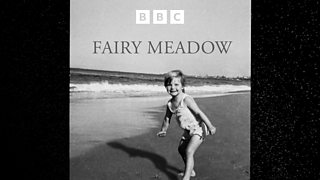Healing after hair loss: a wig designer shares her story
In Made of Stronger Stuff Dr Xand Van Tulleken and psychologist Kimberley Wilson take a tour around the human body. Each week, they hone in on a different part of the body to help gain a better understanding of both it, and ourselves as a whole.
In Episode 3, “Hair”, the pair find out what causes hair loss and how it impacts us emotionally. They talk to a trichologist about the causes of hair loss, consider how it reflects societal issues, and find out from a professor at Harvard Medical School about the future of lab-grown hair. Is there anything we can do to prevent or remedy baldness? Kimberley and Xand also hear from wig designer Gina Night about her experience of hair loss. This is her story.

Listen to Made Of Stronger Stuff now on ���˿��� Sounds

Gina’s story
For Gina Knight, hair has always formed a core part of her identity. Gina, a black woman, was raised in foster care by a white family, and so her hair became a way in which she connected with her Nigerian heritage. Yet in 2012, when Gina became pregnant with her first child, her relationship with her hair changed. “I noticed a small circular patch on the crown of my head. I knew how well I took care of my hair and I thought ‘it’s just a fluke, it’s nothing’.” Then the small bald patch started to grow, so she sought medical advice. Gina’s doctors told her that post-partum shedding was normal: during pregnancy people retain a lot of hair, so when this excess hair starts to drop it can seem like an alarming amount of hair loss.

If the doctor had asked me more questions, he would have realised that I don’t braid my hair, I don’t wear wigs, I don’t use a relaxer.
Central Centrifugal Cicatricial Alopecia
Gina heeded the advice of her doctors and decided not to worry about her growing bald patch. “In the case of my type of hair loss, [it] was the stupidest thing I could have done.” With her situation worsening, she returned to the doctor in search of answers. “Initially, the doctor wasn’t very helpful to me at all,” she recalls. “I think when it comes to black women, we get profiled quite a lot.” There was an assumption that black hair practices were to blame for the damage. Yet this wasn’t the case for Gina at all. “If the doctor had asked me more questions, he would have realised that I don’t braid my hair, I don’t wear wigs, I don’t use a relaxer.” On seeking the help of a trichologist (a specialist in studying and treating issues with the hair and scalp) she was diagnosed with Central Centrifugal Cicatricial Alopecia (CCCA). This is a form of scarring alopecia which starts at the crown and works outwards. It results in the death of hair follicles, which causes permanent hair loss.“Once you’ve lost the hair, it can’t come back”
Xand explains that, for a long time, medical professionals assumed CCCA was caused by certain hair practices. In fact, it is the result of an inflammatory autoimmune response to the hair follicle, and some black women can have a genetic predisposition to the condition. Sadly, if Gina’s concerns hadn’t been dismissed, she could have accessed several effective treatments to halt further hair loss. As Xand explains: “Once you’ve lost the hair, it can’t come back.” These misguided, racially-based assumptions led not only to Gina’s hair loss, but also the emotional strain of stress and anxiety that accompany it.

A gap in the market
When exploring ways to disguise her CCCA, Gina found the range of wigs for black women particularly disappointing. “All of the good wigs that you would want to wear, that would be comfortable [and] well made were in European hair textures.” As a natural problem-solver, Gina decided to rise to the challenge of filling the gap in the market. “Loose curls, tight curls, afros, everything you can think of, I wanted to be able to give women back what they had lost in an affordable and creative way.” She certainly succeeded. Gina now runs her own wig design business, and as well as helping women in their everyday lives, her wigs have even appeared on stage in the West End.

Taking matters into her own hands
In the aftermath of her own diagnosis, Gina faced endless struggles trying to style her hair around the baldness. Even her social life had been impacted by her hair loss, as she no longer wanted to spend time with taller friends who might notice it from above. “I’m five foot,” she reflects. “That’s everybody.” Gina had had enough, and with the help of two friends and a cut-throat razor, took matters into her own hands and shaved her head. “It felt like a weight was lifted off me. Coming to terms with being bald was a long, long process.”
“You can’t be who you can’t see”
Gina now wants to raise the awareness of hair loss more broadly. “You can’t be who you can’t see. It’s really important that as people with hair loss or alopecia we are represented and seen.” While there are many high-profile, desirable bald male role models in the public eye, Gina would like to see the same representation for women. “We’re still beautiful, we’re still here, and we still want to be seen.”
So, a decade since she was diagnosed with CCCA, how is Gina coping with her baldness? “Only in the last six months or so have I one hundred percent felt like I look better without hair. I still pay extra attention to my eyebrows, because it’s the only hair I have!




